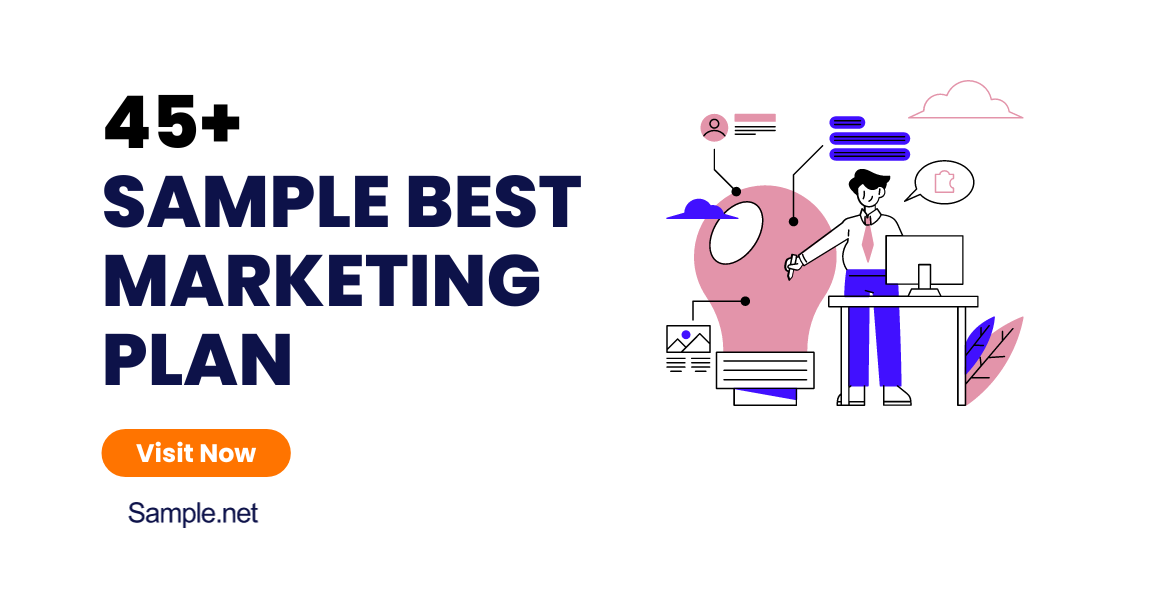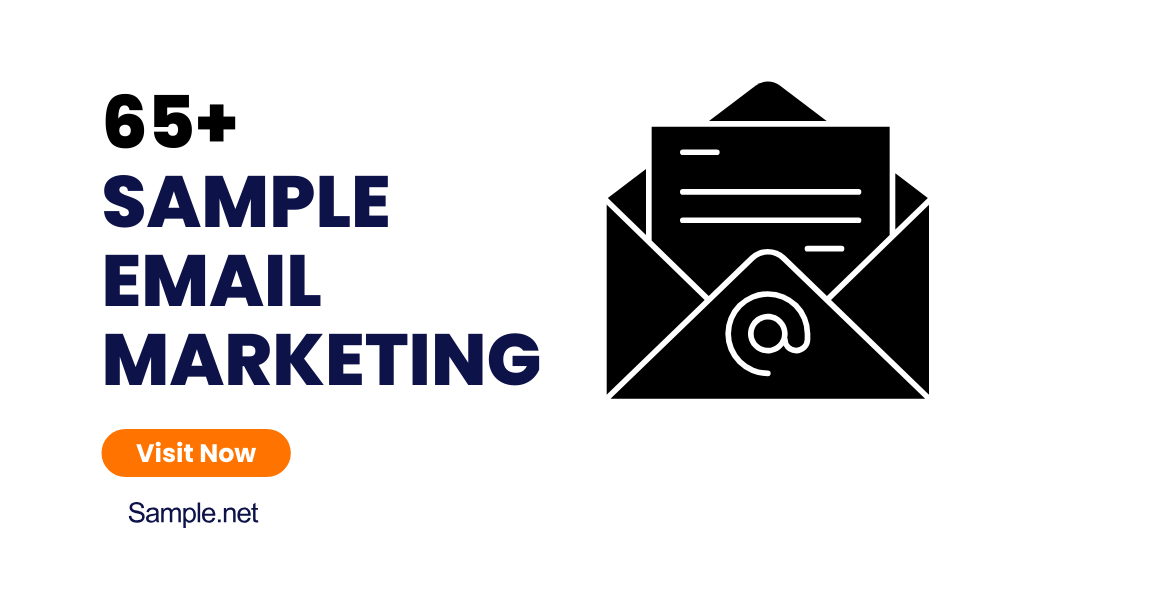When planning for your marketing efforts, it is important for you to be guided by a document that can present a concrete and concise list of your plans of…
continue reading36+ Linkedin Marketing Samples
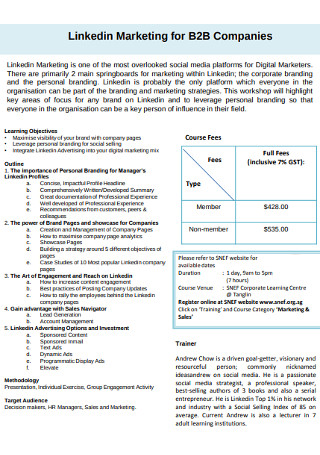
Linkedin Marketing for B2B Companies
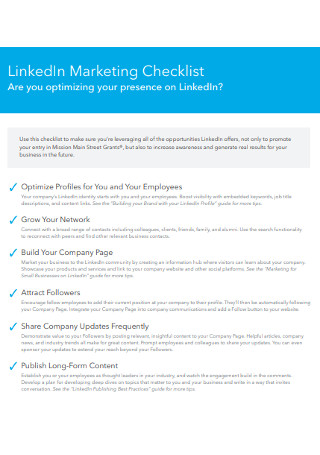
LinkedIn Marketing Checklist
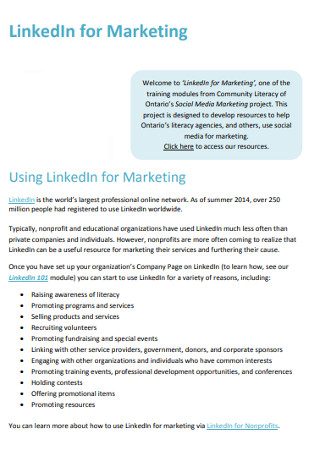
Sample LinkedIn marketing
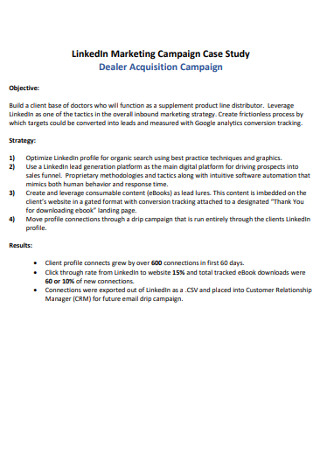
LinkedIn Sales Marketing
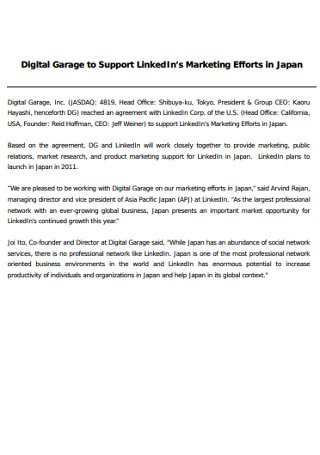
LinkedIn Digital Marketing
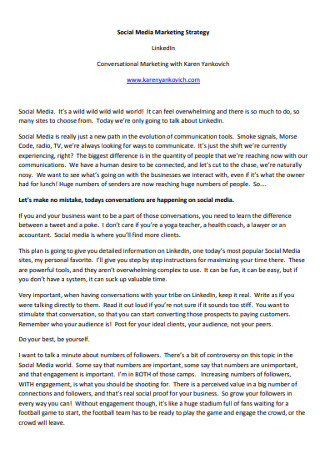
Social Media Marketing Strategy
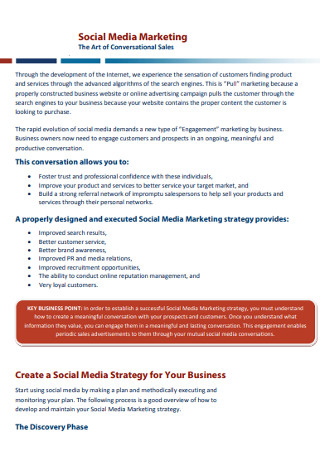
Sample Social Media Marketing
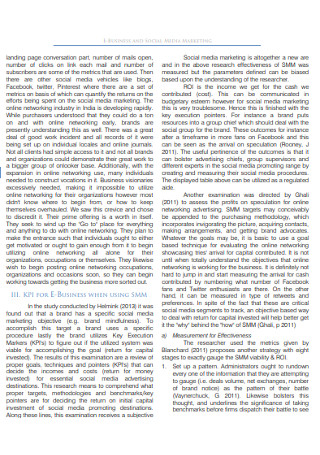
Social Media E-Business Marketing

Basic Social Media Marketing
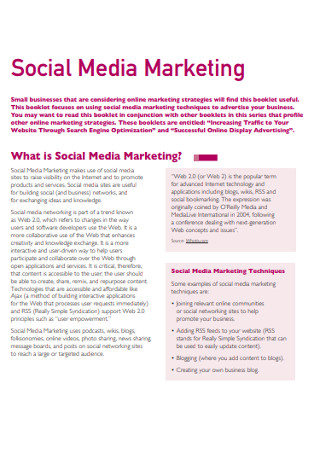
Standard Social Media Marketing
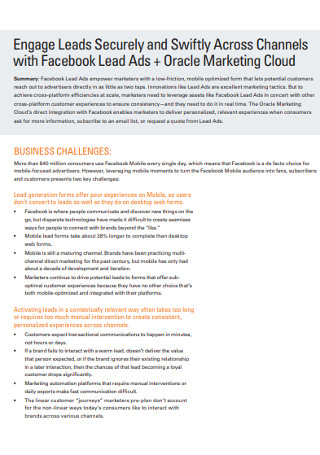
Sample Facebook Marketing
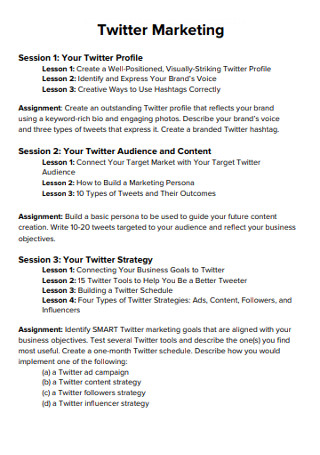
Sample Twitter Marketing
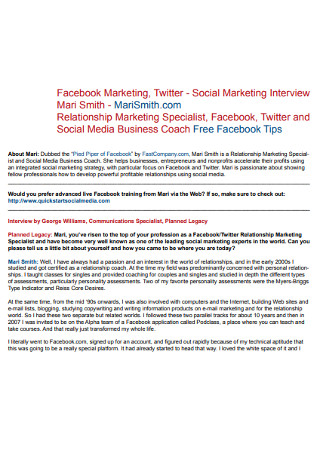
Social Media Facebook Marketing

Twitter Office of Marketing
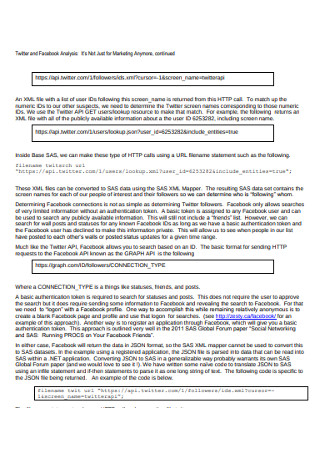
Twitter and Facebook Marketing Analysis
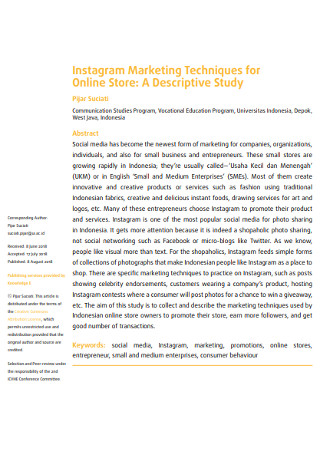
Sample Instagram Marketing
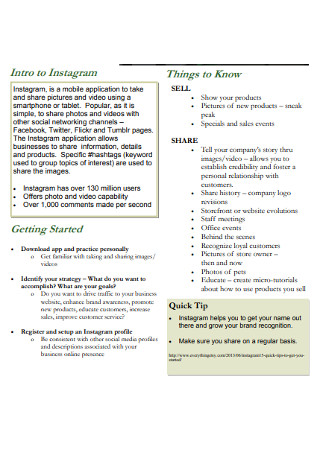
Social Media Instagram Marketing
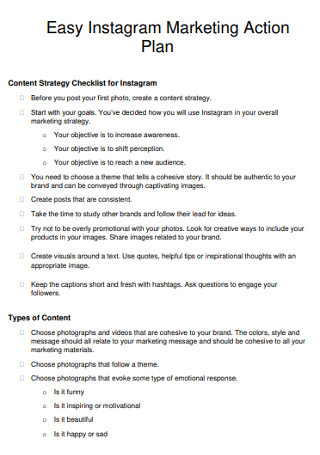
Instagram Marketing Action Plan
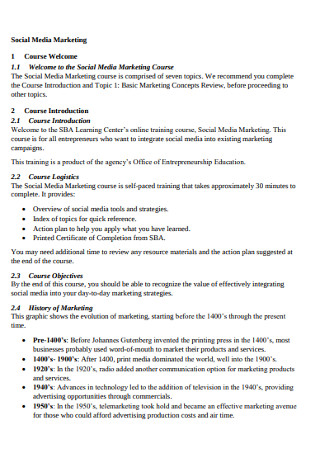
Printable Social Media Marketing
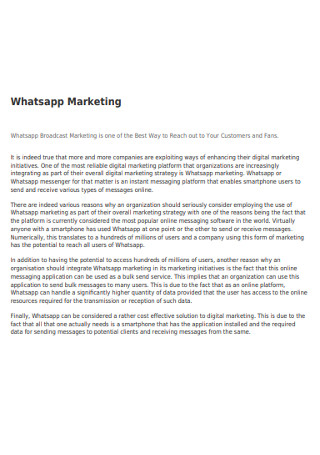
Sample Whatsapp Marketing
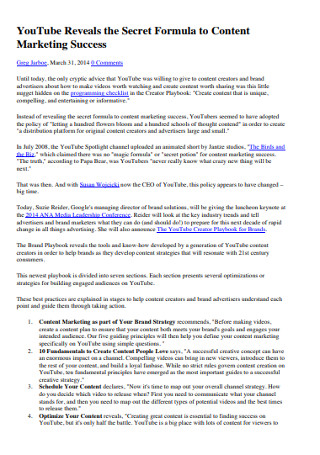
Sample YouTube Marketing
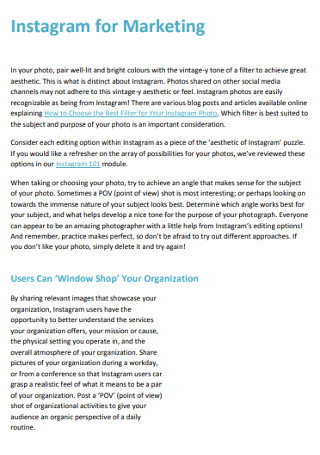
Sample Instagram for Marketing in PDF
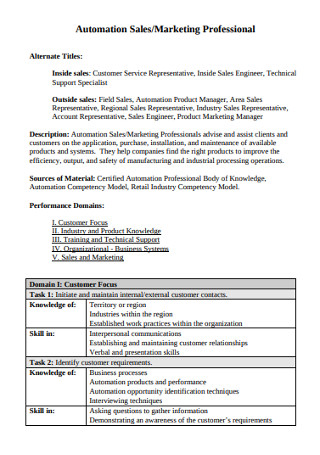
Professional Marketing Sales Automation
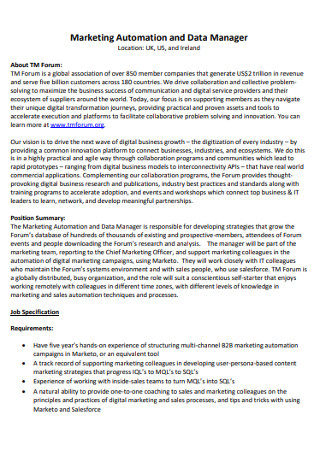
Marketing Automation and Data Manager
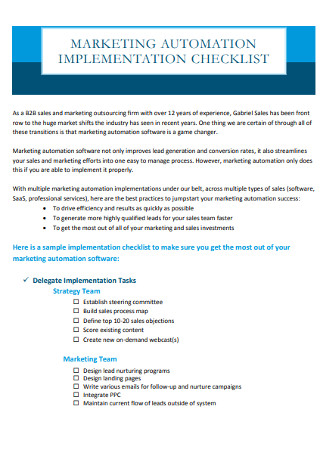
Marketing Automation Implementation Checklist
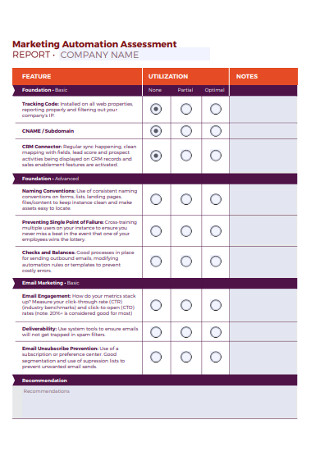
Marketing Automation Assessment
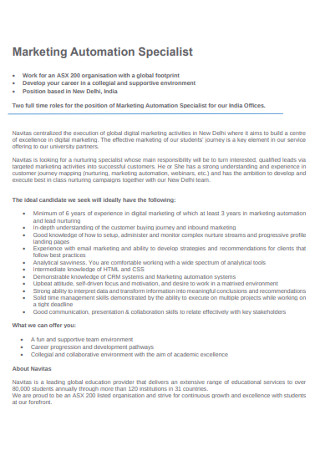
Marketing Automation Specialist
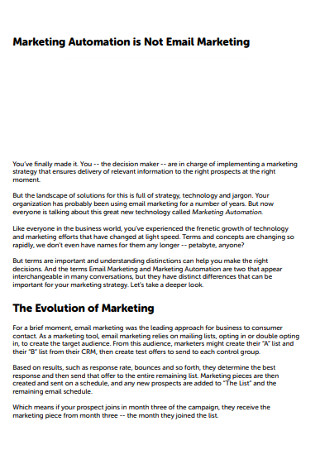
Email Marketing Automation
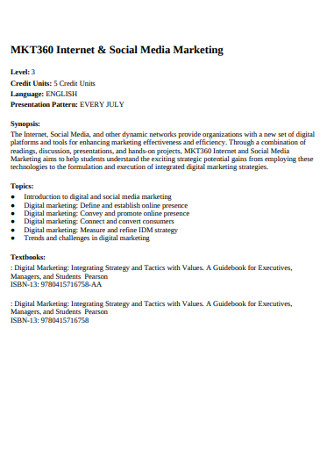
Internet and Social Media Marketing
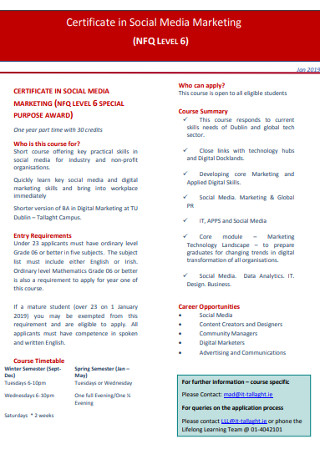
Certificate in Social Media Marketing
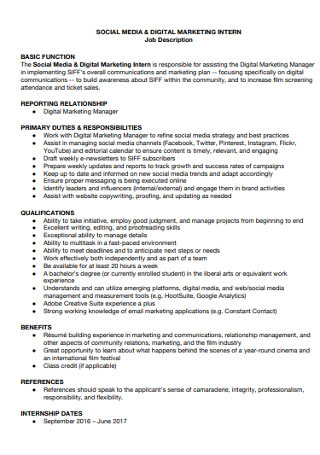
Social Media digital Internet Marketing
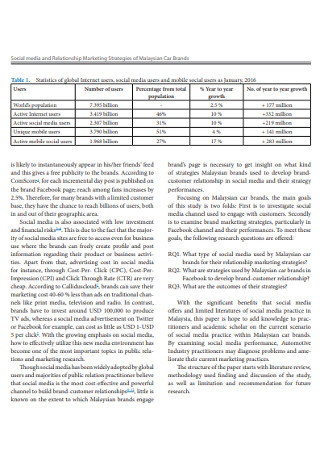
Social Media and Relationship Marketing Strategies
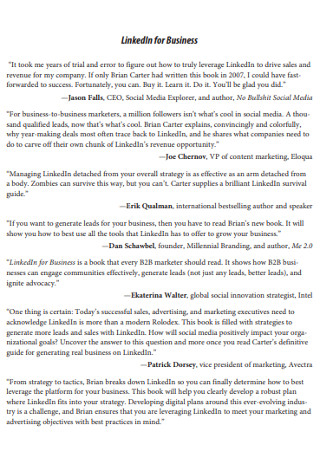
Linked for Business Marketing

Sample Linkedin Marketing and Engagement
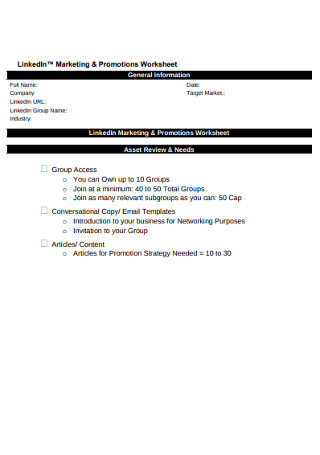
LinkedIn Marketing & Promotion Worksheet
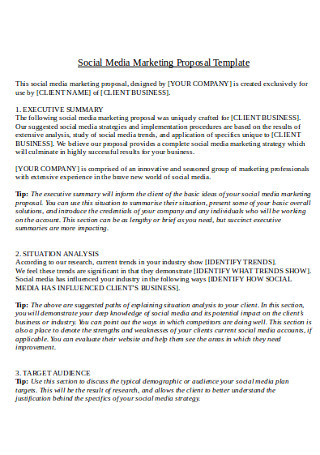
Social Media Marketing proposal Template
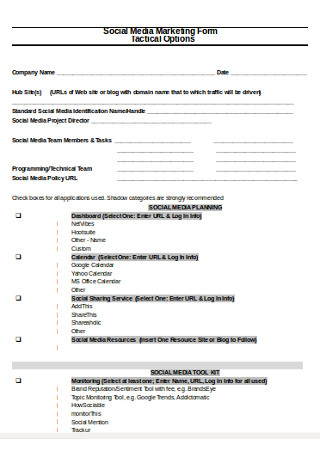
Social Media Marketing Form
What Is LinkedIn Marketing?
To define things in a simple manner, LinkedIn marketing is your efforts of generating leads, establishing strategic partnerships, and building brand awareness through the use of the social media site that is LinkedIn. As a social media platform, it is used by more than 450 million professionals all over the world to connect their brands with others. The strategies and tactics employed are known to vary greatly, depending on what any given brand’s specific goals are.
“LinkedIn is the #1 channel B2B marketers use to distribute content at 94%.” (source: Business.LinkedIn
“LinkedIn makes up more than 50% of all social traffic to B2B websites & blogs.” (source: Sumo.com)
“Only 1 million users have published an article on LinkedIn” (source: Blog.LinkedIn)
The Types of LinkedIn Marketing Tactics
Should you decide to dedicate your marketing efforts through the use of LinkedIn as your platform, it is time to discuss the tactics that are at your disposal. The promotion of your business using ads can be done in the following ways:
How to Use LinkedIn for Marketing
Even with the most common and effective tactics singled out, the question of how you get to that point may still linger in your mind. Fortunately, there are many tips that you can use to help you in better engaging with your audience. Without further ado, let us take a closer look at the following:
Step 1: Begin with Your Own Profile
Your marketing efforts begin with your individual profile. Ensure that the content of it will help make you stand out from your those working for your competitors. As much as possible, shoot for either 100% completeness or as close to is as you can anyway. Optimize your account as time goes by through adding brand new skills, achievements, and even more examples of your outstanding work.
Step 2: Make a Company Page
After you have started with your individual profile, the time has come for you to turn your attention towards your company’s profile. This is how you provide prospective customers with vital info regarding your company, including who works there, what you offer, and whatever engaging content that you may also want to share. The creation of company pages is free for all users.
Step 3: Specify Your Goals
Before you can continue to do anything else, it would help if you had a clear vision of what it is that you are trying to accomplish with your content marketing efforts. For step three, be sure that each of your goals—whether big or small, short-term or long-term—are all clearly defined. That way, any results you get out of your activities can be measured in a realistic and timely manner. Doing this hand in hand with defining your audience also helps immensely.
Step 4: Optimize for Searches
If there is one thing that every successful company page has in common, it is having an audience. Attracting one is the primary concern of the next two steps. First things first, you need to ensure that your company page is fully optimized for searching. Gaining visibility can be done through a few ways. Specifically designing your page to be SEO friendly is one way to go. Another would be through adding links to the page, which can be instrumental in boosting its ranking for searches. Then there is the sharing of highly relevant content.
Step 5: Add Page Followers
It must be said that when people follow your page, any updates from you will directly appear on their feed. The greater the number of page followers you have, the even higher your reach potential becomes for every update published. To help you add even more followers, feel free to consider the following: begin with employees since they can be your biggest advocate; promote the page outside your company by inviting customers and various other key partners in becoming followers; add a visible ‘follow’ button on your company website.
Step 6: Post High-Quality and Engaging Content
Your next objective would be to ensure that every content that you publish is something that your audience will not only find interesting but also be of immense value to them. If you want to see indicators of what engaging content is like, refer to how many clicks, comments, and shares your posts have. As tempting as it may be, refrain from focusing too much on ‘salesy’ content. A surefire way to steer your content in the right direction would be to ask yourself if what you post can help your audience perform their jobs in better ways, answer their questions, or help address any pain points.
Step 7: Make Good Use of Media
Are you aware of the fact that the human brain is capable of processing images much faster compared to text? It is because of that very reason that posts that utilize image are known to garner as much as six times the amount of engagement as text-only content. What we are trying to say is that you can better achieve the success you want by catering to the audience’s craving for more visual-oriented content. This can be easily done through the addition of images to your posts, linking YouTube videos, and even the use of SlideShare presentations.
Step 8: Sponsor Posts
For step eight, you should already be familiar with some sponsored posts especially those that have been covered before in the ‘types of LinkedIn marketing tactics’ section. It is worth emphasizing that sponsored posts can help attract even more followers by ensuring that your page’s updates are placed before more people. There’s also the option to utilize LinkedIn’s Direct Sponsored Content, which is helpful for those who want to test out the multiple variations of their messaging.
Step 9: Make LinkedIn Ads
Besides the use of sponsored content, you can also turn to other ways of advertising on this social media site. Two alternatives would be managed campaigns and self-service ads. Regardless of which of the two you decide to go for, you need to know how to properly execute the elements of targeting, bidding, and measurement & optimization in all of your LinkedIn ad campaigns for you to see an improvement in your results. Just like when you first started with setting up the company page, it is very important that you define what your ad campaign’s goals are.
Step 10: Utilize Advanced Analytics
Last but definitely not the least, what would be the use of trying to create compelling content if you’re not even sure which ones resonate the most with certain audience segments. Fortunately for you, there are many ways for you to drill down into the preferences and behaviors of your audience. To monitor and optimize, you can use LinkedIn Company Page analytics and analytics for publishing on LinkedIn. There also happens to be a way to improve the performance of your paid campaign through the use of LinkedIn Campaign Manager analytics. By monitoring your analytics dashboards every day, you put yourself in a much better position to make data-informed choices, which will lead to even better results.
The Dos and Don’ts of LinkedIn Marketing
Now we arrive at the topic of what you should do and what you should refrain from at all costs. We know how easy it can be to find yourself trapped in a hole when it could have been otherwise avoidable. Fortunately for you, we are here to provide you with a detailed list so that you can prevent any costly gaffes on your part and focus more on building up your brand. So without further ado, let us take a closer look at what these specific dos and don’ts are.
What to Do
1. Do make sure that your page is as professional as it can be:
Remember why you are on LinkedIn in the first place. This is not Facebook where you can freely post funny memes or vacation photos, nor is this Twitter where you can rant about personal problems or make just any comments you want. If you want to be taken seriously by your audience then you need to maintain a level of consistency in regards to your professionalism. In other words, keep things strictly business-related.
2. Do pay close attention to what others are saying:
People will talk and it pays to know what it is that they are saying. After all, this will include anything that is being said about your brand, or its products. You can learn a thing or two about whatever discussion there might be going on, so be sure that you do not neglect to check any trending topics on a regular basis.
3. Do make sure that you vary your posts each time:
Being considered boring is definitely not going to help your brand in making a name for itself. For that very reason, it pays to have different variations of your posts every time that you publish something. A level of consistency is admirable but know when to shake things up. For example, if you posted something about a product of your’s on Monday, maybe on Tuesday you can share an article that relates to your brand instead. Do this for maximum engagement and you are bound to see improvements, along with the possibility of being seen as an industry leader.
4. Do make sure that you personalize any connection requests that you send:
Here’s a bit of trivia that you may not be aware of: if too many people respond to your connection requests with “I don’t know this person”, there’s a strong possibility of your account getting restricted by LinkedIn. Therefore, make it a point to personalize your connection requests. You can do this by either reminding a particular person of how you know each other or by explaining why it is beneficial for them to connect with you. By doing either of the two, you increase the chances of others accepting your requests.
5. Do respond to messages in a timely manner:
Now that you have people sending you messages, you may think that you’ve got it made and that you’re free to respond whenever you want. In truth, it is much better if you respond in a timely manner. People do not want to be made to feel insignificant nor do they want to think that you’re ignoring them. You are likely to further develop professional relationships if you respond within an acceptable timeframe—unless of course if you have a legitimate reason for your delayed reply.
What Not to Do
1. Do not put all your focus on the selling
A common mistake people can make is focusing more on selling their products and services. Sure, we all want people to buy what we have to offer, but doing nothing but sales pitches are going to paint you in a negative light. Ease up and find other ways to connect with your audience. Build the relationship first before trying to convince others to buy from you.
2. Do not forget to join groups that are industry-specific
The success of your LinkedIn marketing efforts are going to generally depend on just two things: how you run your page and what your reputation is all about. Once you have properly strengthened your page and connected with all of the right people, the next thing you can do would be to join any relevant groups. If you are active in these groups, other members may start seeing you as a reliable figure of authority and that is another way of finding and developing more connections. Just be cautious about trying to sell in these groups, as you may end up getting removed. Knowledge is your greatest asset in these cases.
3. Do not dehumanize what your brand is all about
You are a human being, not some corporate robot. One of the best things that you may do is create a LinkedIn profile that can effectively humanize it. The voice that your company speaks with should be dripping with humanity. Hard tech lingo should be minimized at best, and the same goes for any overused clichés. Although professionalism is key, there’s nothing wrong with using relevant humor every now and again.
4. Do not rely on too much text
This is the part that will go hand in hand with what has already been said before, but it still pays repeating due to how important it is to emphasize. If text-based posts are all you tend to come up with, know that you are seriously limiting the potential of your success. Include videos or insert pictures to go along with your text. Varied content is the best way to engage with your audience.
5. Do not send any irrelevant messages
One last thing that you definitely shouldn’t do: waste other people’s time as well as your own by sending messages that have nothing to do with your brand. Stick to whatever it is that your brand can offer as well as whatever it is that your target audience either finds valuable or needs.
As you can see, LinkedIn is definitely not just another social media site. There is much work to be done, but the end results tend to be worth all of the effort. Now that you have a better idea of how to use this platform to your advantage, go out there and kickstart whatever plans you may have. There is an online audience out there that is just waiting to be discovered by you.

